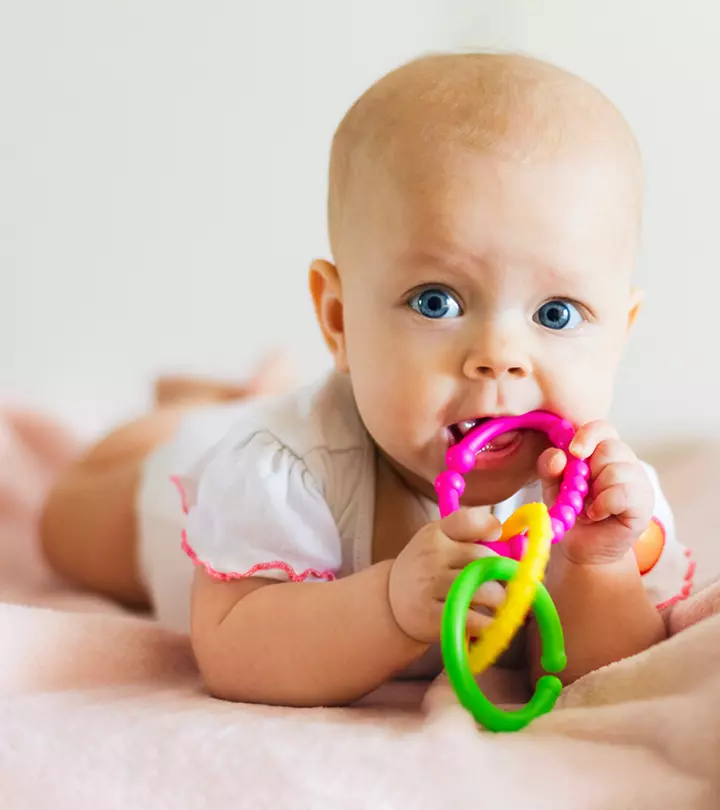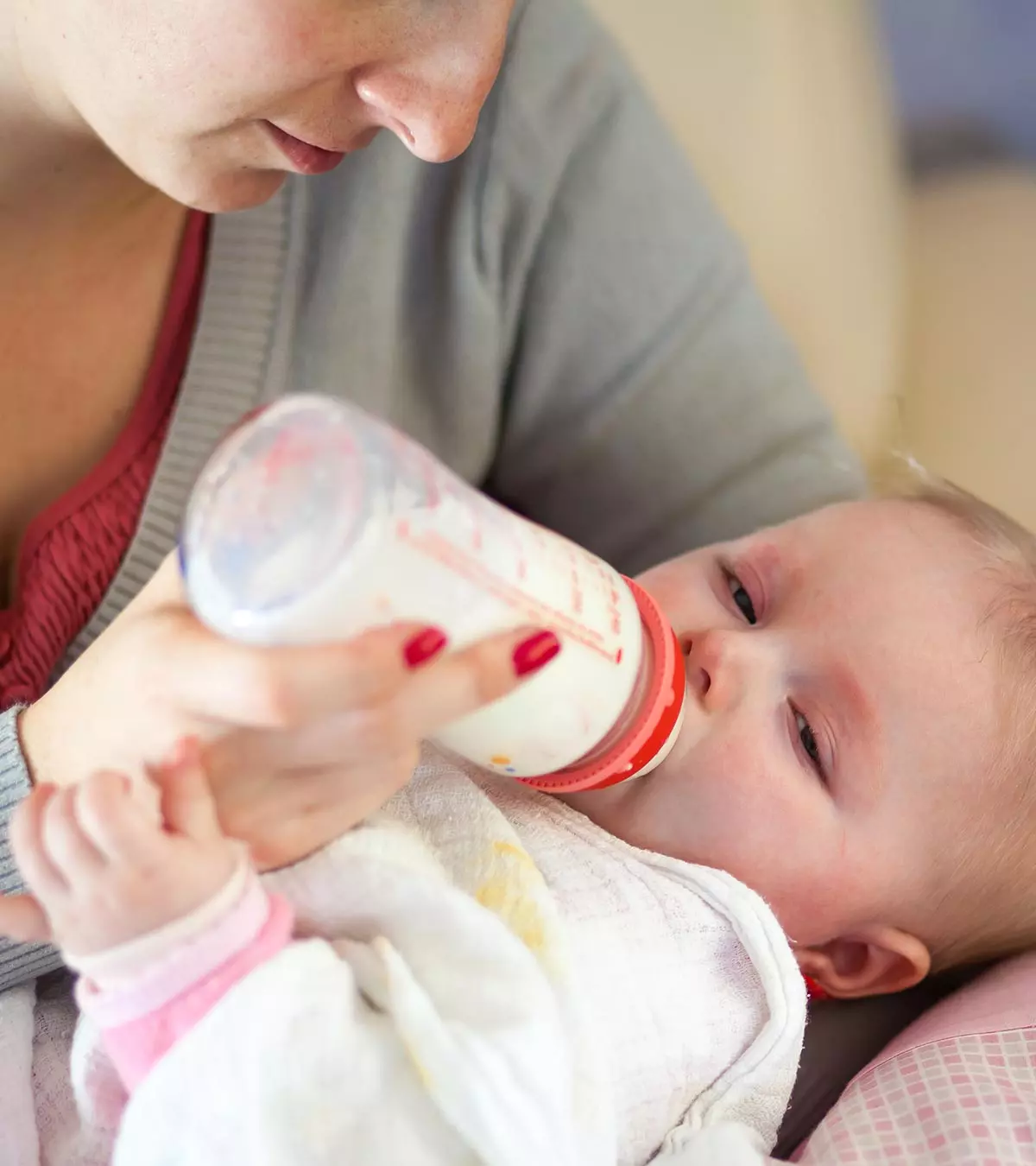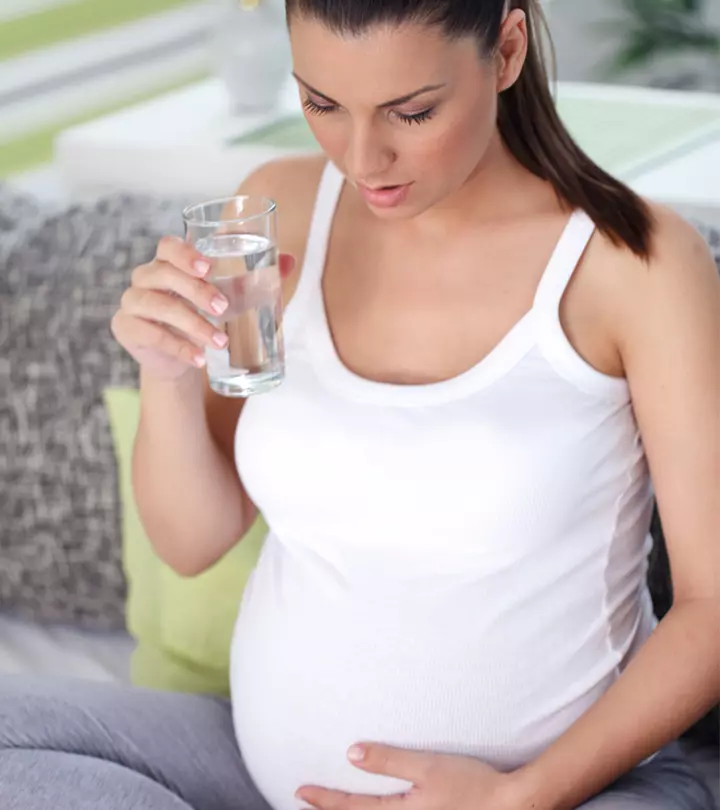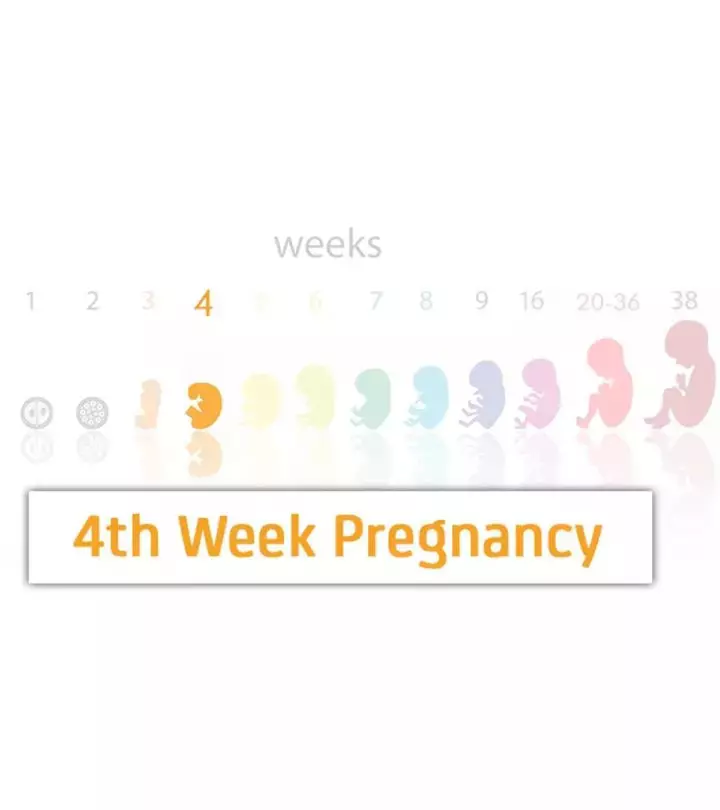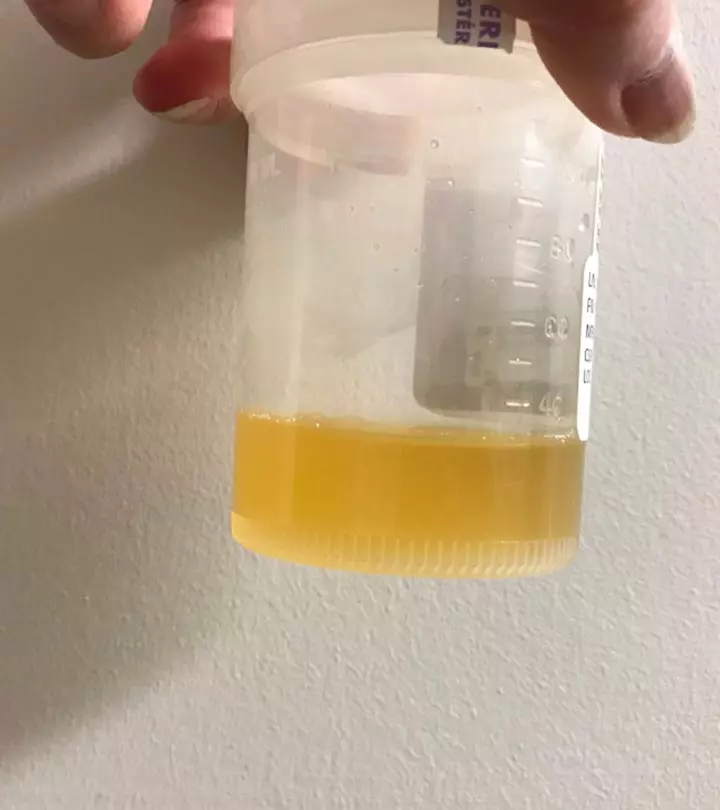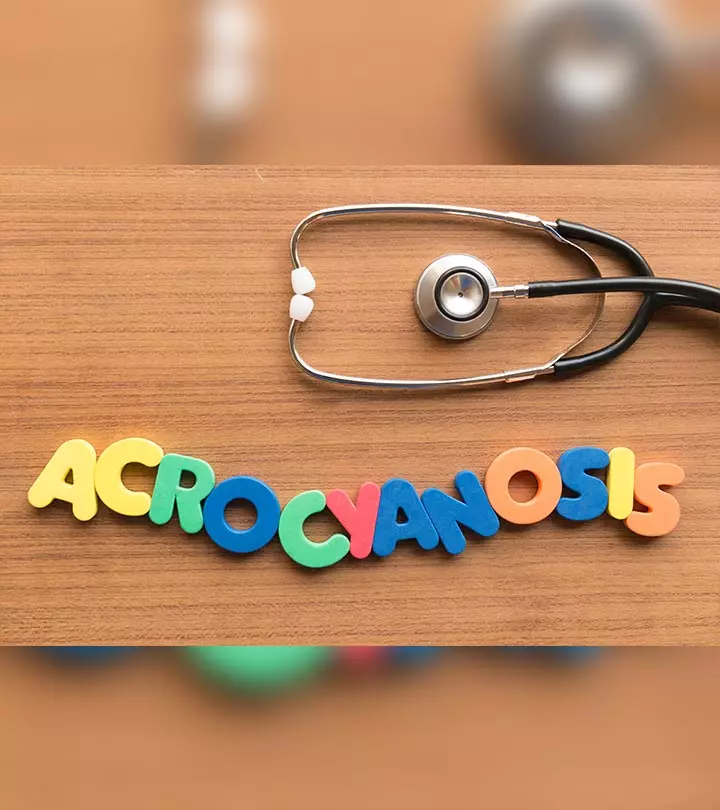
Image: iStock
Peripheral cyanosis is a bluish-purple skin discoloration caused by a lack of oxygen. On the other hand, bluish-purple discoloration around the mouth and extremities, particularly the palms and soles, is called acrocyanosis. Acrocyanosis is usually considered normal in healthy newborns until there is no cyanosis in the central region of the body. Generally, acrocyanosis in newborns can happen due to benign vasomotoriNarrowing or widening of blood vessels causing changes in skin color and temperature. changes, which self-resolve during the first few days of life (1). However, the condition could develop due to other underlying issues as well.
This post discusses everything you need to know about acrocyanosis, including its symptoms, causes, risk factors, diagnosis, and treatment options for babies.
Key Pointers
- The most notable sign of acrocyanosis in babies is painless bluish discoloration of hands and feet.
- A change in blood circulation could be the primary reason for this condition in newborns.
- It is normal for newborns to have acrocyanosis for 24 to 48 hours after birth.
- Girls are more at risk of having this condition than boys.
Symptoms Of Acrocyanosis In Babies
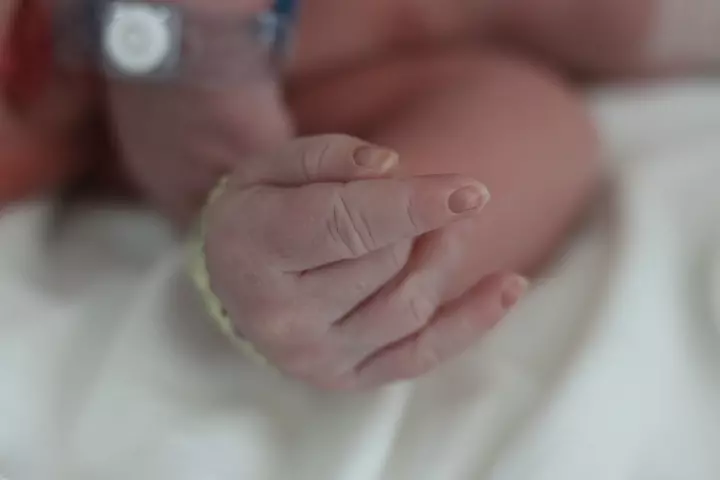
Image: Shutterstock
The appearance of blue hands and feet, although painless, is the most notable sign of the condition. The following signs and symptoms may also be seen in acrocyanosis (2) (3).
- Affected areas may feel cold
- Bluish discoloration is symmetrically distributed
- Cold and swollen fingers and extremities
- Increased sweating in hands and feet
- Cyanosis may occur around the mouth
- Forearms, ears, lips, nose, or nipples may also be discolored in some cases
 Quick fact
Quick factCauses Of Acrocyanosis In Babies
The causes of acrocyanosis depend on whether the acrocyanosis is primary or secondary (4).
1. Primary acrocyanosis
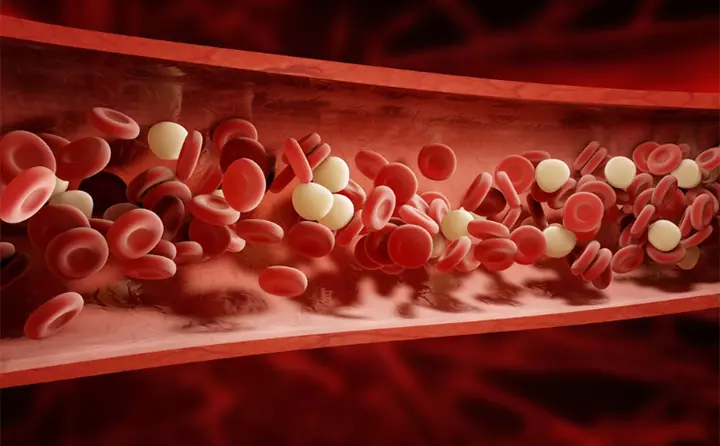
Image: Shutterstock
The exact cause of primary acrocyanosis is unknown. In newborns, a change in blood circulation could be the primary reason. Constriction of blood vessels that transport oxygen-rich blood to the limbs may lead to acrocyanosis.
2. Secondary acrocyanosis
Secondary acrocyanosis usually happens due to an underlying condition and might be accompanied by pain in the discolored areas. It may be seen along with central acrocyanosis. It may happen in conjunction with one of the following conditions.
- Down syndrome in babies
- HypoxaemiaiLack of adequate oxygen in the blood.
- Connective tissue diseases
- NeoplasmsiAlso called tumors, masses of tissue that arise when cells divide and multiply more than they should.
- Peripheral vascular diseasesiNarrowing or blockage of the blood vessels transporting blood from the heart to the limbs and brain, thus affecting their functioning.
- Malnutrition
- Blood disorders
- Sepsis
- Exposure to toxins
- Infections
- Mitochondrial diseases
- Ehlers-Danlos syndromeiA set of inherited conditions affecting the connective tissues.
- Buerger’s diseaseiA condition that causes clotting of blood in parts of hands and legs.
- Spinal cord injury
- Atopic dermatitisiA skin condition that causes dry, itchy, and irritated skin in response to an allergen.
 Things to know
Things to knowIs It Normal For Newborns To Have Acrocyanosis?
It is normal for most newborns to have acrocyanosis for 24 to 48 hours after birth. The reason is the new blood circulation pattern in the baby’s body. The blood and oxygen circulate to the vital organs, such as the brain, lungs, and kidneys, instead of hands and legs. Once the baby’s blood circulation adjusts itself, the acrocyanosis goes away. It might reappear when the baby is cold after a bath but goes away by itself soon.
Risk Factors For Acrocyanosis
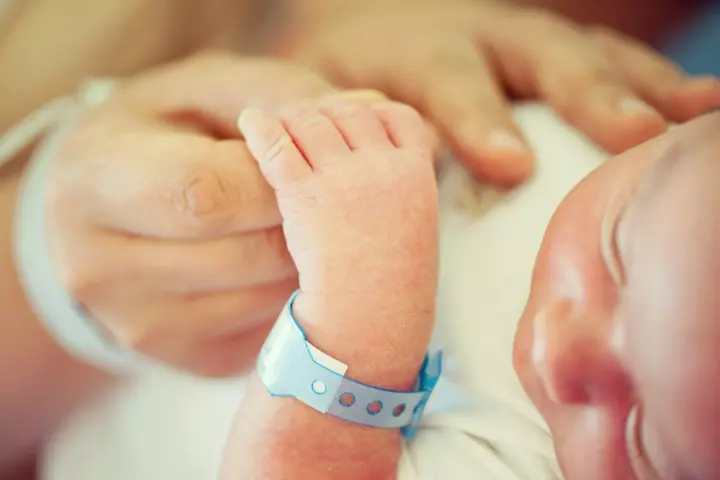
Image: Shutterstock
The following risk factors may put the baby at a higher risk of developing acrocyanosis (2) (5).
- Low body mass index (BMI)
- Sustained exposure to colder temperatures
- Presence of circulatory system-related problems that primarily affect blood vessels
- Girls are noted to have a slightly higher risk than boys
Diagnosis Of Acrocyanosis

Image: Shutterstock
Physical examination and a thorough medical history along with detailed symptom assessment are key contributors to the diagnosis of acrocyanosis. No pain with bluish discoloration is the main sign of acrocyanosis. If the doctors suspect secondary acrocyanosis, they will perform other tests and imaging.
Treatment For Acrocyanosis In Babies
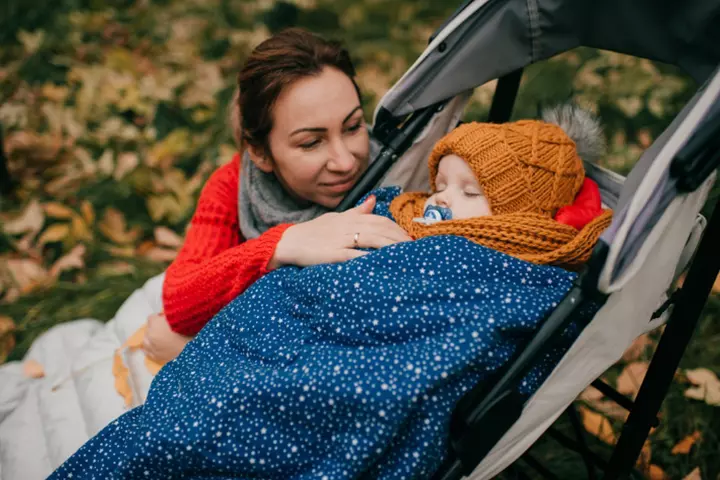
Image: Shutterstock
In most cases, primary acrocyanosis does not need any treatment. Pharmacological intervention is not necessary most times. The baby should be kept warm to avoid acrocyanosis due to cold weather. A bluish discoloration may become more noticeable when the baby is cold or stressed but usually fades once they are warmed up. Make sure to wrap the baby in a towel after a bath to prevent them from feeling cold.
Treatment of secondary acrocyanosis depends on the underlying cause and the symptoms. Secondary acrocyanosis resolves when the underlying condition is treated. Some conditions, such as genetic disorders, may require long-term management to avoid secondary acrocyanosis.
Outlook For Babies With Acrocyanosis
Primary acrocyanosis is usually a harmless condition. In newborn babies, it usually resolves on its own and does not recur in most cases. Secondary acrocyanosis must be thoroughly investigated by the doctor, and the underlying condition must be addressed.
Frequently Asked Questions
1. Is acrocyanosis an autoimmune disease?
Acrocyanosis can occur as a primary or secondary response to autoimmune, neurologic, infective, and metabolic disorders or causes (6).
2. What is the Apgar score for acrocyanosis?
The healthcare professionals perform a test on the newborn baby at one and five minutes after birth. The test measures the baby’s breathing efforts, muscle tone, heart rate, skin color and reflexes to gauge how well the baby tolerated the birthing process (7).
3. Are there any complications or long-term effects associated with acrocyanosis in newborns?
Generally, acrocyanosis is a painless discoloration of the skin that resolves on its own. But in rare cases, trophic changes and ulcerations may occur in remittent necrotizing variety. Remittent idiopathic necrotizing acrocyanosis is a rare condition, which is characterized by pain, tenderness of fingers and toes. It is incensed by cold temperatures and may persist even in the summer (8).
4. What is the difference between Raynaud’s and acrocyanosis?
Acrocyanosis is rarer than Raynaud’s syndrome. Raynaud’s is a temporary discoloration of fingers and toes caused by cold or stress. It typically lasts a few minutes to an hour, whereas acrocyanosis causes persistent blue-like discoloration of the hands and feet. It mainly affects females more than males (9).
Acrocyanosis in newborns is normal and may occur as the circulatory system takes time to adjust to the changes in the body and environment. Most cases of primary acrocyanosis in neonates resolve by themselves. However, secondary acrocyanosis may be associated with underlying health issues. Talk to your doctor if you notice any bluish-purple discoloration around the mouth (also known as circumoral cyanosis) or extremities of your baby. To avoid primary acrocyanosis, infants should be kept warm after birth. If secondary acrocyanosis is detected, it may be necessary to treat associated underlying issues as well.
Infographic: What Are The Signs Of Acrocyanosis In Babies?
Babies may develop acrocyanosis for various reasons, including exposure to colder temperatures or secondary to a particular condition. Therefore, knowing the signs can help manage it effectively. Check out the infographic below to learn about possible signs of acrocyanosis in babies.

Illustration: Momjunction Design Team
References
- Central and Peripheral Cyanosis.
https://www.ncbi.nlm.nih.gov/books/NBK559167/ - Acrocyanosis.
https://www.sciencedirect.com/topics/medicine-and-dentistry/acrocyanosis - Dustin E. Fleck and Mark F. Hoeltzel Hand and Foot Color Change: Diagnosis and Management.
https://www.ncbi.nlm.nih.gov/pmc/articles/PMC3827510/ - Acrocyanosis.
https://dermnetnz.org/topics/acrocyanosis - Skin Color Changes in the Newborn.
https://www.saintlukeskc.org/health-library/skin-color-changes-newborn - Sudip Das and Arunasis Maiti; (2013); Acrocyanosis: An Overview
https://www.ncbi.nlm.nih.gov/pmc/articles/PMC3827510/ - Apgar score
https://medlineplus.gov/ency/article/003402.htm - Acrocyanosis: An Overview
https://www.ncbi.nlm.nih.gov/pmc/articles/PMC3827510/ - Functional vascular diseases: Raynaud’s syndrome, acrocyanosis and erythromelalgia
https://pubmed.ncbi.nlm.nih.gov/20186674/#:~:text=There%20are%20several%20different%20therapy
Community Experiences
Join the conversation and become a part of our nurturing community! Share your stories, experiences, and insights to connect with fellow parents.
Read full bio of Dr. Ashraf Kasem
Read full bio of Dr. Ritika Shah
Read full bio of Rohit Garoo
Read full bio of Vidya Tadapatri














